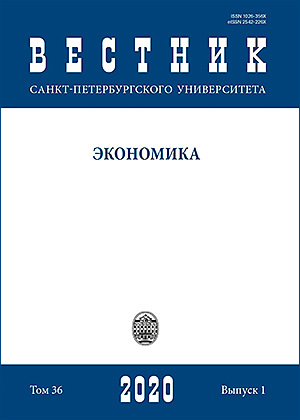Company sustainable growth as the result of interaction between finance, energy, environmental and social factors (in case of JSC “Gazprom”)
DOI:
https://doi.org/10.21638/spbu05.2020.107Abstract
Financial and sustainable growth policies of companies often contradict each other. In this article we analyze possibilities for overcoming this problem by investigating sustainability of financial growth of the largest Russian natural gas company, Gazprom. Unlike traditional interpretations, we consider company sustainability to result from the interaction and interconnection between the financial, energy, environmental, and social subsystems (F-E-Env-S). We analyze the relationship between subsystem indicators using the Higgins Sustainable Growth Index (SGR) and the Sustainable Growth Index (SGSI). Research shows that Gazprom’s sustainable growth system is stable, but to avoid destabilization, we propose ways to prevent the development of barriers to their sustainable growth. The article presents an approach that uses Shannon’s negentropy to improve discrimination of models of a sustainable data coverage analysis (DEA) system. DEA efficiency is first calculated for all possible subsets of variables and analyzed using Shannon’s entropy theory to calculate the degree of importance of each subset in Gazprom’s sustainable growth system. Then we combine obtained performance values and degree of importance to obtain a common performance indicator (CRS), which can significantly improve the discrimination of sustainable growth models. To visualize the transformation of the stability of the system, it is advisable to use the negentropy index. The following factors influence the SGSI level: production, energy saving, environmental rating, environmental footprint, reduction of air pollutant emissions, reduction of wastewater discharges to surface water bodies, environmental expenditures, personnel costs, social expenses, financial leverage, self-financing ratio, and EBITDA.
Keywords:
sustainable growth, Higgins sustainable growth rate, Sustainable Growth System methodology, social-energy-environmental factors affecting on sustainable growth, Data Envelopment Analysis, Shannon’s entropy
Downloads
References
References in Latin Alphabet
Downloads
Published
How to Cite
Issue
Section
License
Articles of the St Petersburg University Journal of Economic Studies are open access distributed under the terms of the License Agreement with Saint Petersburg State University, which permits to the authors unrestricted distribution and self-archiving free of charge.






